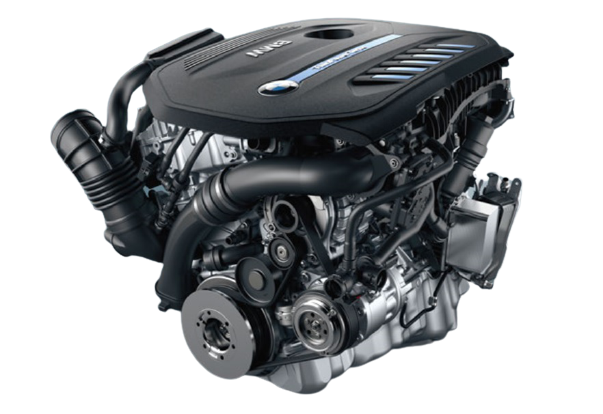How to Maintain Your BMW Engine for Optimal Performance and Durability
Wiki Article
Checking Out the Evolution of Burning Engines in Modern Transport Systems
As we browse the landscape of modern-day transportation, the evolution of burning engines stands as a testimony to human ingenuity and design expertise. The interplay of background, modern technology, and ecological issues in shaping the trajectory of burning engines produces a narrative that is both engaging and insightful.Very Early Beginnings of Combustion Engines
Just how did the idea of burning engines very first emerge in the early phases of transportation growth? When the principles of interior combustion were initial explored, the roots of burning engines can be traced back to the 17th century. In 1673, Christian Huygens conceived a fundamental inner combustion engine that made use of gunpowder to produce power. Nonetheless, it wasn't till the late 19th century that functional applications of combustion engines in transportation started to arise.The advancement minute featured the innovation of the initial successful gasoline-powered engine by Karl Benz in 1885 - bmw engine. This engine paved the method for the advancement of the modern-day automobile, transforming transport systems worldwide. Succeeding developments by Nikolaus Otto and Gottlieb Daimler additionally improved combustion engine technology, causing the automation of autos and the quick growth of the transport sector
These very early combustion engines were defined by their simpleness and efficiency, laying the foundation for the complicated and powerful engines utilized in modern transportation systems. The evolution of combustion engines has been instrumental fit the way we take a trip and transfer goods, marking a substantial landmark in the background of transportation growth.
Shift to Internal Burning Technology
The transition to internal burning modern technology noted an essential shift in the evolution of transport systems. This change began in the late 19th century, with inventors like Nikolaus Otto and Gottlieb Daimler developing the initial effective internal burning engines. These engines changed transportation by offering an extra effective and efficient choice to heavy steam engines and electric motors.Among the essential advantages of inner combustion engines was their capacity to be reduced to fit into vehicles, bring about the development of autos and motorbikes. This shift from cumbersome, stationary engines to portable, mobile ones led the way for the contemporary transport systems we see today.
The shift to internal combustion technology likewise stimulated improvements in fuel innovation, bring about the advancement of fuel and diesel as main gas sources for lorries. This shift not just made transport much more obtainable to the masses however additionally laid the foundation for the oil and gas market to end up being indispensable to worldwide economic situations.
Impact of Combustion Engines on Transport
The adoption of combustion engines in transport systems catalyzed an extensive change in the effectiveness and rate of international movement. Burning engines changed transportation by supplying a functional and dependable source of power for numerous lorries, including automobiles, aircrafts, ships, and vehicles. This advancement dramatically enhanced the capacity for items and individuals to move over cross countries in shorter amount of time, causing boosted connection in between areas and countries.In addition, the widespread usage of burning engines has actually had a substantial influence on financial growth. The capacity to transport goods efficiently has actually stimulated profession and business, enabling services to broaden their markets and reach consumers worldwide. This has promoted financial you can try these out development and globalization, as products can now be transferred faster and in bigger amounts than in the past.
However, the environmental influence of burning engines can not be ignored. The combustion of fossil fuels has actually caused air contamination and greenhouse gas exhausts, contributing to environment adjustment and positioning wellness threats to populations. bmw engine. Because of this, there is an expanding focus on developing alternative propulsion modern technologies to alleviate these unfavorable effects and develop a much more sustainable future for transport
Advancements in Combustion Engine Design
One notable technology is the advancement of turbocharged engines, which utilize exhaust gases to drive a wind turbine that compresses incoming air, allowing for more gas to be burned, resulting in raised power result without a substantial increase in engine size. Variable valve timing systems have actually additionally changed engine layout by enhancing air flow at different engine speeds, boosting both power and performance. These technologies collectively contribute to the continuous renovation of burning engines in contemporary transportation systems.Future Fads in Burning Engine Advancement
With technology developments driving continuous advancement, the future of combustion engine advancement is positioned to transform transport systems worldwide. One of the vital trends in burning engine growth is the push in the direction of better effectiveness and lowered emissions.One more noticeable trend is the fostering of crossbreed technologies in combustion engines. Crossbreed engines incorporate conventional burning modern technology with electric power, using boosted fuel performance and lower exhausts. As the automotive market shifts in the direction of electrification, crossbreed burning engines are viewed as a transitional remedy that bridges the space between standard lorries and fully electric ones.
Furthermore, the combination of clever modern technologies, such as synthetic intelligence and data analytics, is anticipated to play a substantial duty in the future of burning engine growth. These technologies can optimize engine performance in real-time, leading to much more effective burning procedures and enhanced overall car performance. Accepting these future patterns will not only drive development in combustion engine development however additionally add to a much more lasting and eco-friendly transport ecological community.

Conclusion
In verdict, the development of burning engines in contemporary transportation systems has been noted by substantial improvements in modern technology and design. From the early starts of combustion engines to the transition to blog inner burning innovation, these engines have actually had a profound impact on transport.The origins of combustion engines can be mapped back to the 17th century when the concepts of internal burning were very first explored. These engines revolutionized transport by providing a more powerful and efficient choice to steam engines and electrical motors.

Report this wiki page